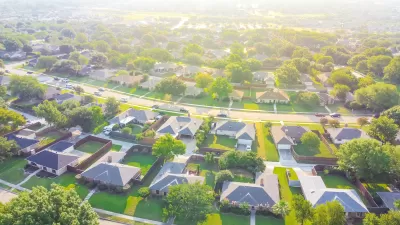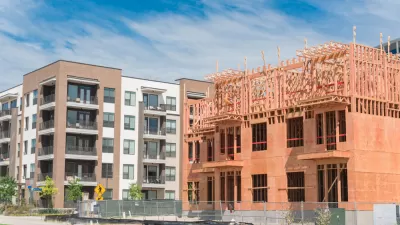The high cost of housing in the United States can be attributed in part to the high costs, regulatory and otherwise, of building new housing.

“The main factor driving the cost of all housing is the cost of building new housing,” writes Michael Andersen, arguing that “If we want our cities’ older homes to cost less, either to buy or rent, we need it to be less expensive to create a new home.” As Andersen explains, “in the end, pricing mostly comes down to cost. The price of existing homes is held down (or driven up), more than anything else, by the cost factors of creating new housing.”
If all of us deserve a home, and I happen to agree with the 1948 United Nations General Assembly that we all do, there’s no alternative to taxing and spending. And if we also want to avoid housing shortages like today’s, there’s also no alternative to making homes cost less to build.
According to Andersen, part of the problem stems from unnecessary legal requirements. Some mandatory items, like windows, indoor plumbing, and safe electrical cables, are “well worth their costs.” But “when our governments require homes to be a certain level of ‘nice’ to be allowed to exist, they’re making assumptions that don’t apply to everyone.” Loosening some of these requirements could reduce the cost of building new homes and, thus, the cost of housing. The source article links to Andersen’s more detailed proposals in Willamette Week and his discussion of the issue on the Week’s podcast.
FULL STORY: The Price of Old Homes Depends on the Cost of Building New Homes

Planetizen Federal Action Tracker
A weekly monitor of how Trump’s orders and actions are impacting planners and planning in America.

San Francisco's School District Spent $105M To Build Affordable Housing for Teachers — And That's Just the Beginning
SFUSD joins a growing list of school districts using their land holdings to address housing affordability challenges faced by their own employees.

The Tiny, Adorable $7,000 Car Turning Japan Onto EVs
The single seat Mibot charges from a regular plug as quickly as an iPad, and is about half the price of an average EV.

Seattle's Plan for Adopting Driverless Cars
Equity, safety, accessibility and affordability are front of mind as the city prepares for robotaxis and other autonomous vehicles.

As Trump Phases Out FEMA, Is It Time to Flee the Floodplains?
With less federal funding available for disaster relief efforts, the need to relocate at-risk communities is more urgent than ever.

With Protected Lanes, 460% More People Commute by Bike
For those needing more ammo, more data proving what we already knew is here.
Urban Design for Planners 1: Software Tools
This six-course series explores essential urban design concepts using open source software and equips planners with the tools they need to participate fully in the urban design process.
Planning for Universal Design
Learn the tools for implementing Universal Design in planning regulations.
Smith Gee Studio
City of Charlotte
City of Camden Redevelopment Agency
City of Astoria
Transportation Research & Education Center (TREC) at Portland State University
US High Speed Rail Association
City of Camden Redevelopment Agency
Municipality of Princeton (NJ)





























